
For one of my birthdays, I received a set of magnetic googly eyes. The idea is that you use them to attach photos to your fridge and that you can put the googly eyes over people or animal eyes for a comic effect. Naturally I saw their potential for helping children to learn a little more about magnetism outside. The photo above shows a transfer of the googly eyes to a litter bin logo. Now let the fun begin…

Firstly it helps if your class has had some introduction to magnets and are aware of the concept of a force. There are several misconceptions about magnets which can be addressed through this investigation. Encourage your class to discuss these in advance alongside a reminder about what items need to be kept away from magnets. This tends to be less of an issue outside. Then afterwards, you can re-visit the ideas and find out what has been learned about magnetic forces and how they act.
- Are all metals magnetic? How do you know?
- Are magnets sticky? Tell me more.
- Can the force of a magnet be experienced through other materials? How could you illustrate this?
Before I set off, I wasn’t entirely sure as to whether or not there were many magnetic surfaces outside. I needn’t have worried. There’s lots of metal outside and most is magnetic. The only obvious surfaces that were non-magnetic were all the street signs and bus shelters.
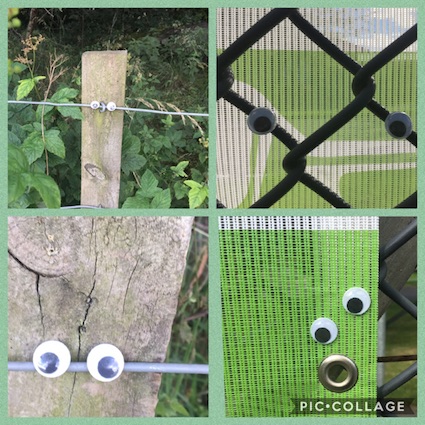
The search also went micro. I discovered that nails on painted fences and fence wire was magnetic. The magnetic force works through paint but also some plastic and other materials. The googly eyes have a surprisingly powerful magnet attached which also worked through soft material. It is worth inviting the children to guess which surfaces may be magnetic first of all and then to check afterwards. It can help with the categorising of materials. The magnetic objects tend to be metal solids. But is all metal magnetic?

Initially I thought I would need to take along some chalk or a whiteboard marker pen to add faces. However I think the photos demonstrate that careful placement of the eyes can make the most of environmental features.
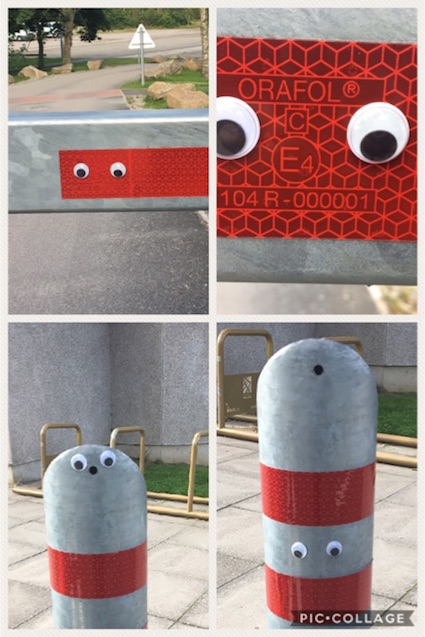
I particularly like this idea for exploring magnetic materials outside. Magnets are good fun, but the eyes add a creative twist which for some children will be more relevant. It also means that there is a springboard into this investigation based upon a child’s interest in monsters, or that they have received a card with googly eyes and so on. A cheap alternative is to glue white cardboard with black eye markings onto button magnets.

It also reminds me about sayings such as “having eyes in the back of your head.” My gran used to talk about having her “beady eye” on me and my sisters as a warning to behave.
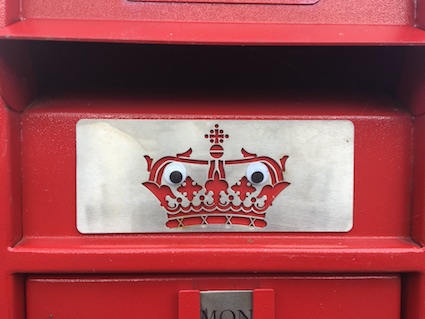
The personification of inanimate objects enables other learning comes into play. Children can take photos of their decisions about where to place their eyes. This will affect the character and mood created – so thinking about grumpy, happy, surprised or frightened looks can be an ongoing discussion, providing an opportunity to discuss feelings. It also presents moments to scribe simple stories that the children may make up. Doing a “near” and “far” shot brings in discussions relating to position, movement and direction.
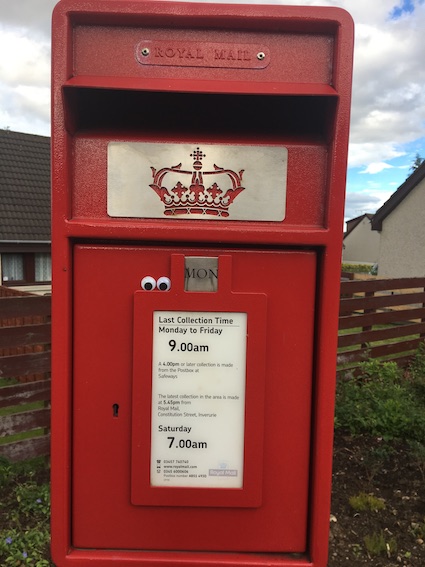
Perhaps, most importantly, the googly eyes provide another lens for exploring the local area which may be more attractive. Children like to interact with their surroundings in fun ways. The approach doesn’t need to be laboured either – it can be a spur of the moment interest if you happen to have a pair of eyes in your pocket…
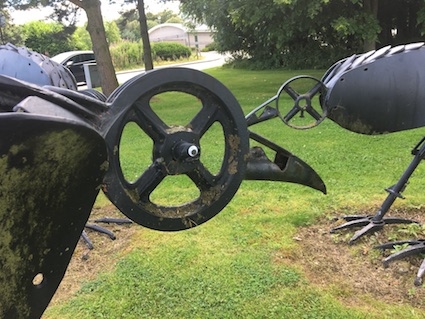
Naturally, this approach is become an art form in its own right. Check out this Bulgarian Googly-Eyed Street Art 🙂
This blog post was originally published in August 2017.





























